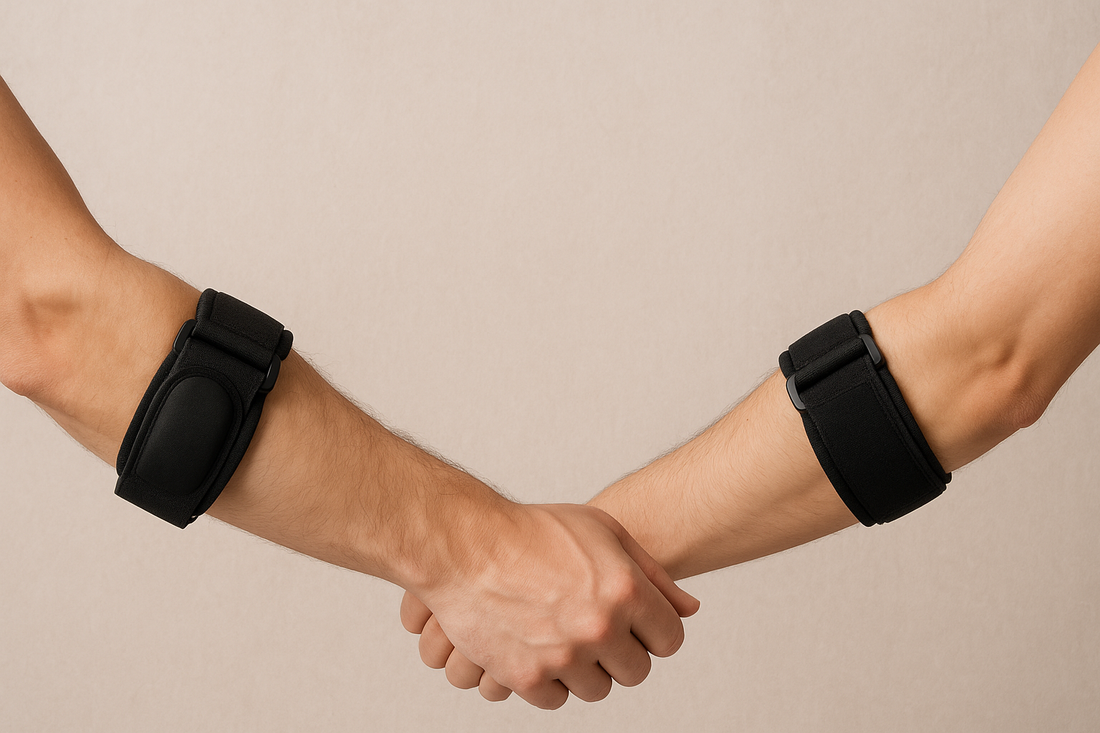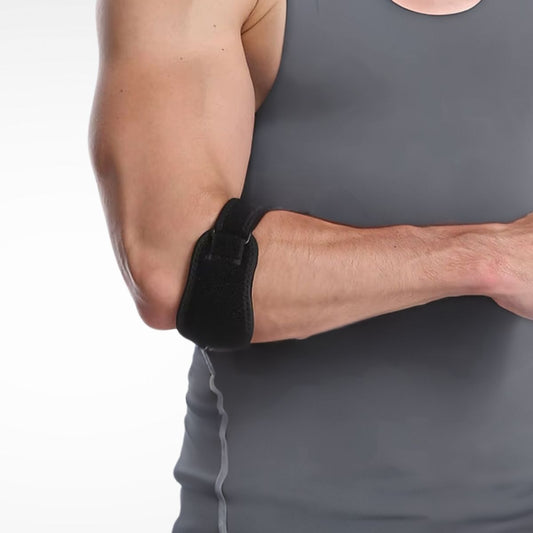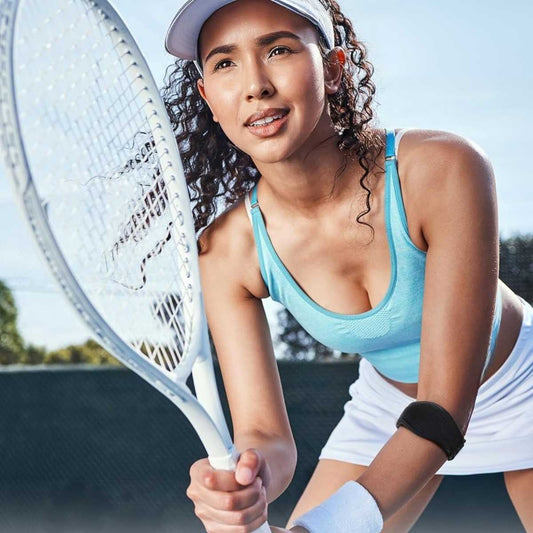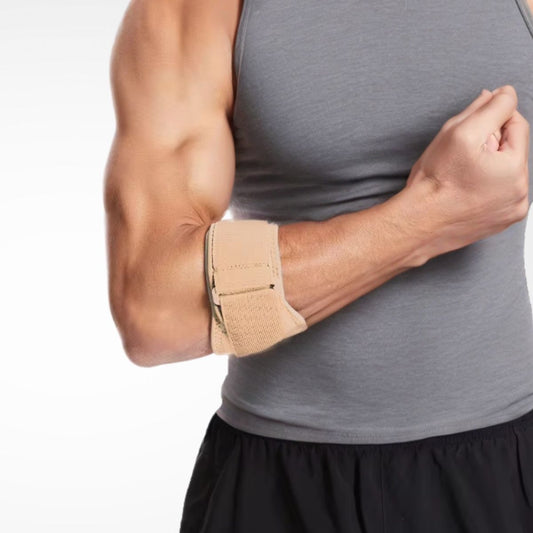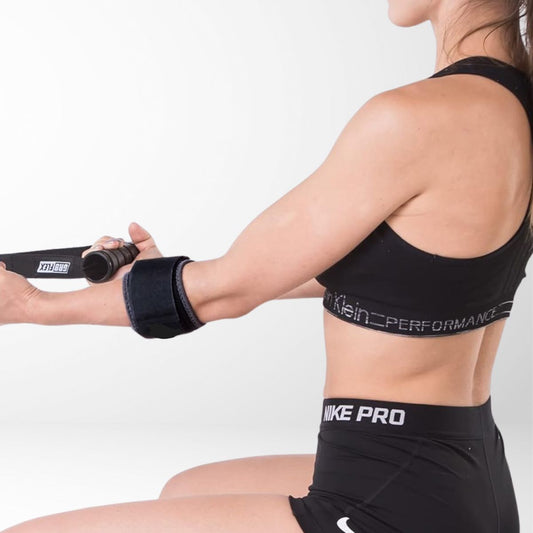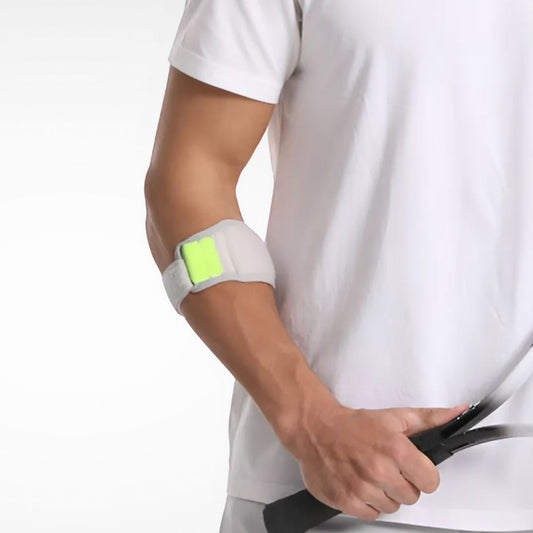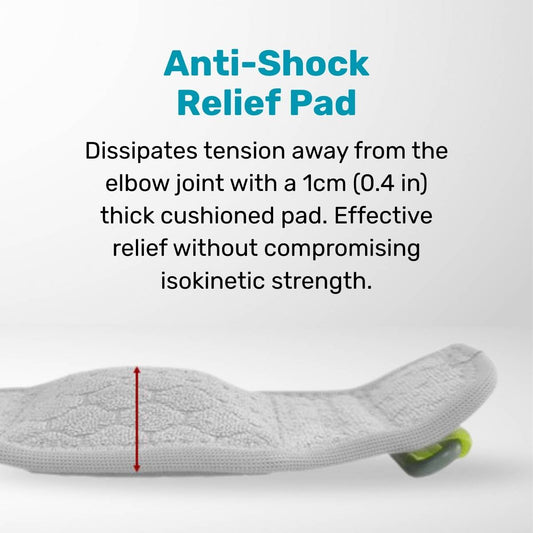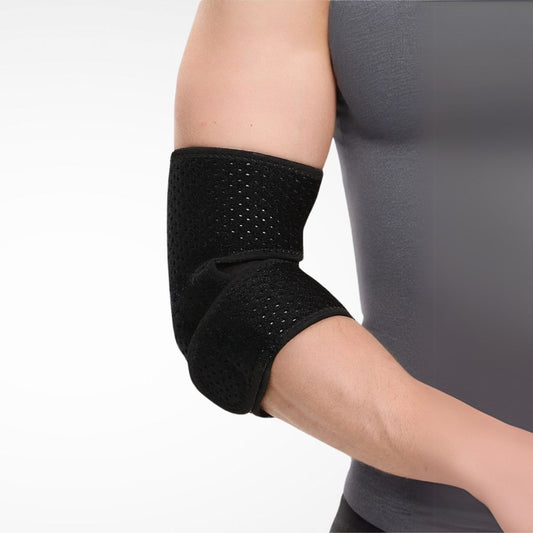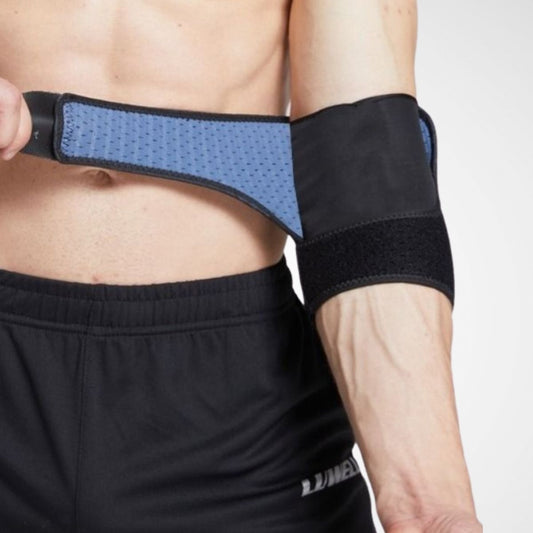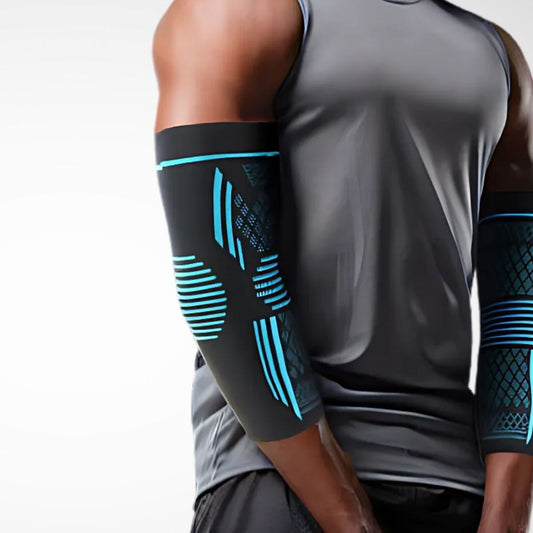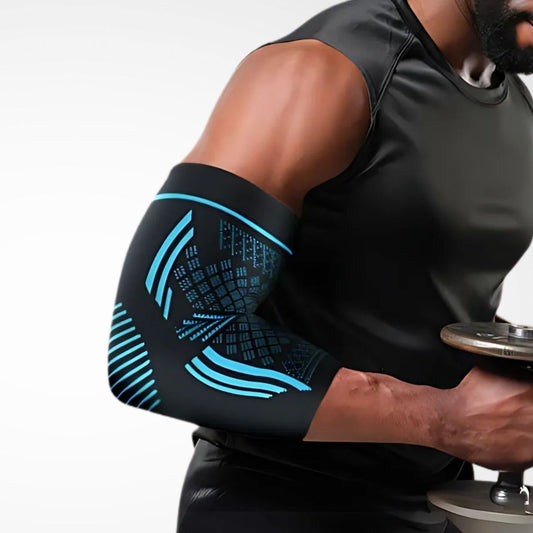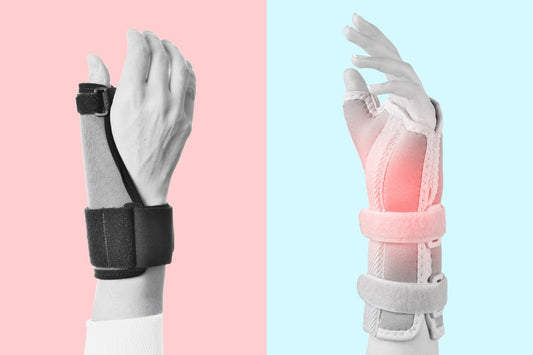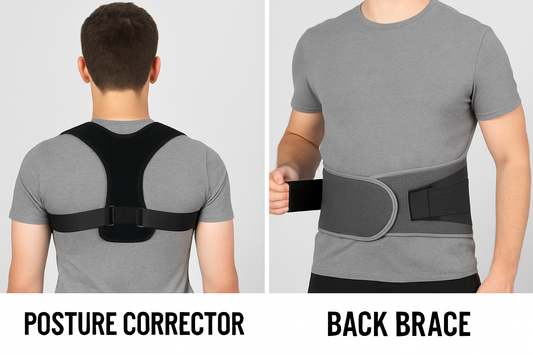Elbow pain is a common frustration for athletes and everyday workers alike. Two of the most frequent conditions are tennis elbow (lateral epicondylitis) and golfer’s elbow (medial epicondylitis). Both involve tendon irritation, both make gripping and lifting painful, and both can be managed with the help of braces.
But here’s the question: Do you actually need a separate brace for each condition, or are they essentially the same?
Are Golfer’s Elbow Brace and Tennis Elbow Brace the Same Thing?
At first glance, a golfer’s elbow brace and a tennis elbow brace look nearly identical. Most are counterforce straps or compression sleeves designed to relieve tendon strain. The key distinction lies not in how they’re made, but in where and how they’re worn:
- Tennis elbow → pain on the outside of the elbow.
- Golfer’s elbow → pain on the inside of the elbow.
That’s why the same brace can often be used for both, provided you position it correctly.
Key Differences: Structure and Support
| Feature | Tennis Elbow Brace | Golfer’s Elbow Brace |
|---|---|---|
| Target Area | Outside of the elbow (lateral tendons) | Inside of the elbow (medial tendons) |
| Condition | Tennis elbow / lateral epicondylitis | Golfer’s elbow / medial epicondylitis |
| Design | Counterforce strap or compression sleeve | Counterforce strap or compression sleeve |
| Brace Placement | Just below the outer elbow | Just below the inner elbow |
| Support Function | Reduces stress on wrist extensor tendons | Reduces stress on wrist flexor tendons |
Common Use Cases for Each
Tennis Elbow Brace
A tennis elbow brace applies gentle pressure just below the outside of the elbow, easing tension on the wrist extensor tendons. This makes it useful not only for athletes but also for anyone whose daily activities trigger pain on the lateral side of the joint.
Ideal for:
- Outer elbow pain that worsens when gripping, lifting, or extending the wrist
- Racquet sports like tennis, pickleball, or squash
- Baseball pitchers and athletes performing repetitive arm swings
- Weight training movements such as rows, curls, or pull-ups
- Office or desk work that involves long hours of typing and mouse use
- Household or hobby activities like painting, carrying groceries, or DIY projects
Golfer’s Elbow Brace
A golfer’s elbow brace is worn just below the inside of the elbow, where it helps reduce strain on the flexor tendons that control gripping and wrist flexion. It’s widely used by athletes, manual workers, and even those managing day-to-day elbow discomfort.
Ideal for:
- Inner elbow soreness when gripping, throwing, or bending the wrist
- Golfers, pitchers, and climbers placing repeated stress on the forearm flexors
- Strength training moves such as deadlifts, pull-ups, and kettlebell swings
- Professions or hobbies requiring strong grip use, including construction, carpentry, or gardening
- Common daily tasks like cooking, lifting children, or carrying bags
Can They Be Used Interchangeably?
In most cases, yes. A single counterforce strap can effectively serve for both tennis elbow and golfer’s elbow. What matters is not the label on the packaging, but how you position the brace:
- For tennis elbow, the cushion pad for targeted compression is placed just below the outer side of the elbow.
- For golfer’s elbow, the cushion pad for targeted compression is shifted to the inner side instead.
That is why you will see that these two terms are often used interchangeably commercially.
Some braces are marketed specifically for one condition, but this is often a matter of branding. A well-designed brace with adjustable straps or a wraparound fit can usually be rotated to work for either.
That said, there are minor differences worth noting:
- Padding shape: Some models feature targeted pressure pads shaped to sit more naturally on the inner or outer forearm.
- Compression sleeves: Wider sleeves may offer balanced support across the joint, but can feel warmer and less discreet than straps.
- User preference: Athletes may prefer slim straps for mobility, while those wearing braces for work or daily use might favor broader sleeves for comfort.
Ultimately, interchangeability makes braces a flexible investment — but ensuring correct placement and comfort is key for effective relief.
How to Choose the Right One
- Identify the pain location: outside = tennis elbow, inside = golfer’s elbow.
- Pick your style: straps are compact and targeted; sleeves offer broader compression.
- Check adjustability: Velcro or adjustable straps allow for precise fit and pressure.
- Match to activity: athletes may prefer lighter straps; workers may benefit from sleeves for all-day wear.
Final Thoughts
When it comes to a golfer’s elbow brace vs tennis elbow brace, the differences are less about the brace itself and more about how and where you use it. Both are designed to reduce tension on overworked tendons, and both can bring relief when everyday tasks or sports movements start to hurt; And often, both refer to the same product.
If your pain is on the outside of the elbow, a brace positioned laterally can help calm tennis elbow. If it’s on the inside, shifting the brace medially can ease golfer’s elbow. In many cases, the same counterforce strap or compression sleeve can support both conditions simply by adjusting placement.
That said, braces are not a cure on their own. They work best when combined with rest, stretching, strengthening, and activity modification. For some people, wearing a brace during aggravating activities makes the difference between powering through pain and being able to continue comfortably. For others, it’s a tool that allows them to stay active while their tendons recover.
If discomfort lingers despite consistent use, it’s worth consulting a healthcare professional to confirm the diagnosis and explore further treatment options. But for many people, a simple brace — worn correctly — can be an effective first step toward managing elbow pain and getting back to the activities they enjoy.

